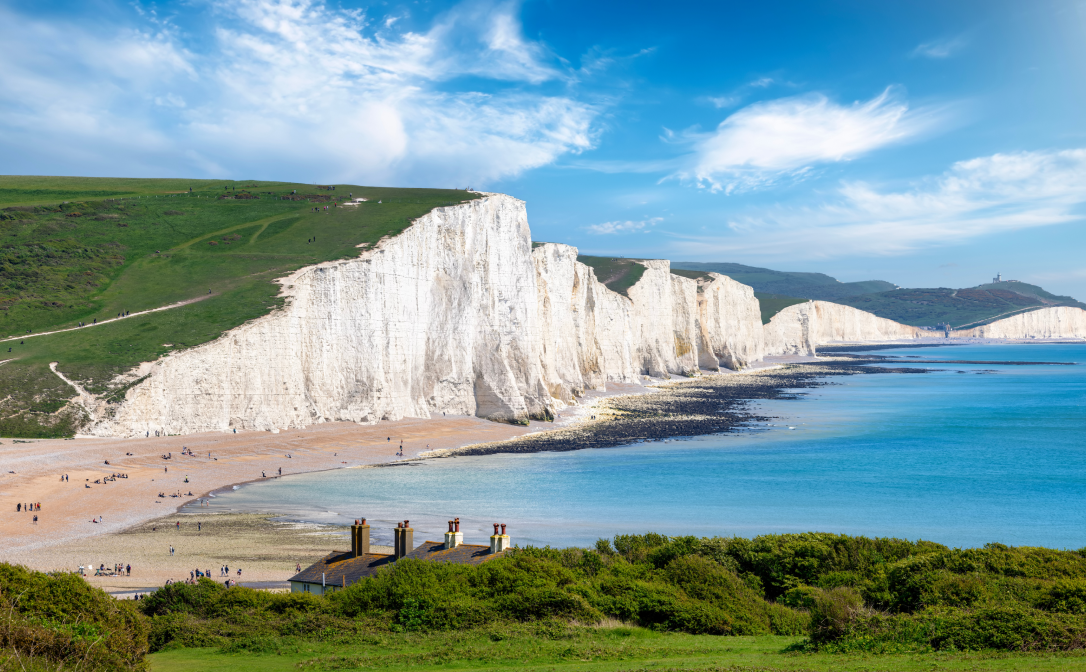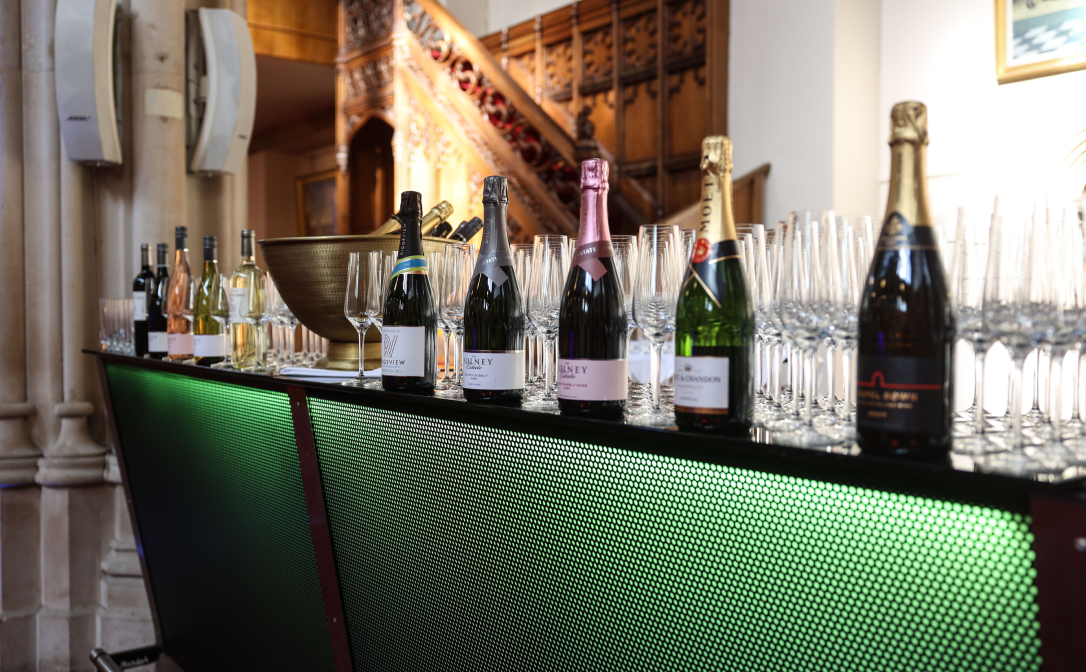Long gone are the days where you could call English sparkling wine the underdog - last March, Wine Lister released a study where English fizz ranked second, just behind Champagne, in average critics’ scores, highlighting its growing recognition for quality.
In the space of thirty years, English wine went from being very anecdotal to being renowned across the world. But how did this transformation happen, and what are the secrets behind English sparkling wine?
Biscuit in a bottle
Sparkling wine represents two thirds of the total wine production in the UK, with the vast majority using the traditional method, ie. the method used to make Champagne and Cava. This process involves a second fermentation, responsible for the bubbles in sparkling wine, happening in the bottle rather than in the tank. As a result, the wine develops autolytic aromas, such as pastry, biscuit, bread dough or brioche, adding another layer of complexity to the citrus and green fruit aromas.
The chalk factor
The South of England, home to a majority of sparkling wine producers, shares the same chalky soil as Champagne. This type of soil is ideal to reflect the sunlight and drain water – which is essential for grapes to fully ripen in England’s often cool and damp climate.
While global warming brings many challenges to viticulture, it’s made southern England increasingly suitable for growing grapes (even if the rise of extreme weather events induced by global warming can impact the harvest significantly). The climate today mirrors the one in Champagne fifty years ago. The warmer weather helps grapes ripen better, but it’s still cool enough for them to retain a high acidity.

The Seven Sisters chalk cliffs in East Sussex
Learning from the best
English sparkling wine benefits from learning from centuries of knowledge from Champagne, while embracing modern winemaking equipment and techniques, which has inevitably fast-tracked the rise of production.
English wine also immediately positioned itself as a premium and qualitative sparkling wine. While this meant overcoming the initial skepticism (how do you convince consumers to pay a premium price for a country no one takes seriously wine production-wise?), the gamble has paid off. Today, English sparkling wines have established a reputation across the world, and it’s not unusual to see it featured proudly on the wine lists of top restaurants.
Some visionary producers played a key role in helping English sparkling wine to earn global acclaim. Nyetimber was the first to plant the traditional champagne varieties (Chardonnay, Pinot Noir and Meunier) in West Sussex in 1988 – which makes sense if you want to make a premium sparkling wine, and share a similar soil and climate to the most highly regarded wine region in the world. Today, those three grapes represent about 70% of the grapes planted in the UK.
This pioneering aspect, coupled with good products, efficient marketing and tourism helped brands like Nyetimber or Gusbourne to establish themselves as reliable and premium.
How to choose a bottle of English sparkling wine?
With prices often at a premium (although an increasing number of supermarkets have now developed their own label to offer more affordable options) and a lot of specific terms often derived from French, it can be overwhelming to find yourself in front of the wine aisle to pick a bottle of English fizz. Here are our top tips to help you read between the lines of labels and pick the perfect bottle of sparkling:
Look for “traditional method” (or the French version, méthode traditionelle)
Most wines using this method (ie. having undergone a second fermentation in the bottle) will write it on the label. You can expect added complexity to the citrus and apple aromas with notes of pastry and sourdough.
Start with a brut non-vintage
These sparkling wines are blends of several years, and in a climate like the UK’s, where some years can still be too cool or wet for grapes to ripen properly, blending is important to ensure consistency of the wine.
Step up your game with a vintage sparkling
If it was a particularly good year weather-wise (try 2014, 2018 or 2020), you may opt for a vintage fizz, which tend to show more complexity and typicity linked to the conditions of the year of the harvest. Vintage wines are usually aged longer than non-vintage, so not only will you get biscuity notes but also some nuttiness, honey and dried fruit flavours.
Rosé sparkling
This always a fabulous treat in my opinion – bringing vibrant red fruit and pastry flavours.
‘Blanc de blancs’
This name refers to sparkling wines made only with white grape variety, which most of the time will be Chardonnay. Expect a leaner, zestier type of wine, ideal if you prefer a lighter, more citrus-driven fizz.

A variety of English sparkling wines, alongside a Champagne option.
When to serve and how to store
Aromas in sparkling wine are delicate, so temperature matters. Serve it at 8–10°C to keep things fresh and lively. If you’re enjoying a more complex vintage bottle, slightly warmer (10–12°C) can help enhance the complexity of its aromas.
Never chill it in the freezer. Sudden temperature changes can damage the wine. Instead, keep it stored horizontally in a cool, dark place until you decide to open it. Your fridge will also do the trick (and if you have a wine fridge, even better as you can control the temperature and store more bottles).
Most sparkling wines don’t need to be aged more after they are released on the market – they’re likely to have spent plenty of time ageing before going on sale. However, vintage sparkling could benefit from cellaring, and with time develop richer nutty and dried fruits flavours.
In terms of picking an event to open it, the decision is yours entirely – thinking we need an occasion to open a bottle of fizz is a myth. Yes, it will pair perfectly with any wedding, summer party or brunch, but also with a movie night, Sunday tea and pastries with your family, or the first summer days calling for that impromptu picnic in the park.
This blog post was prepared by Iris Fabre DipWSET, an Educator at WSET School London. Originally from France, she gained valuable hospitality experience in London before becoming a full-time wine educator and freelance writer.


